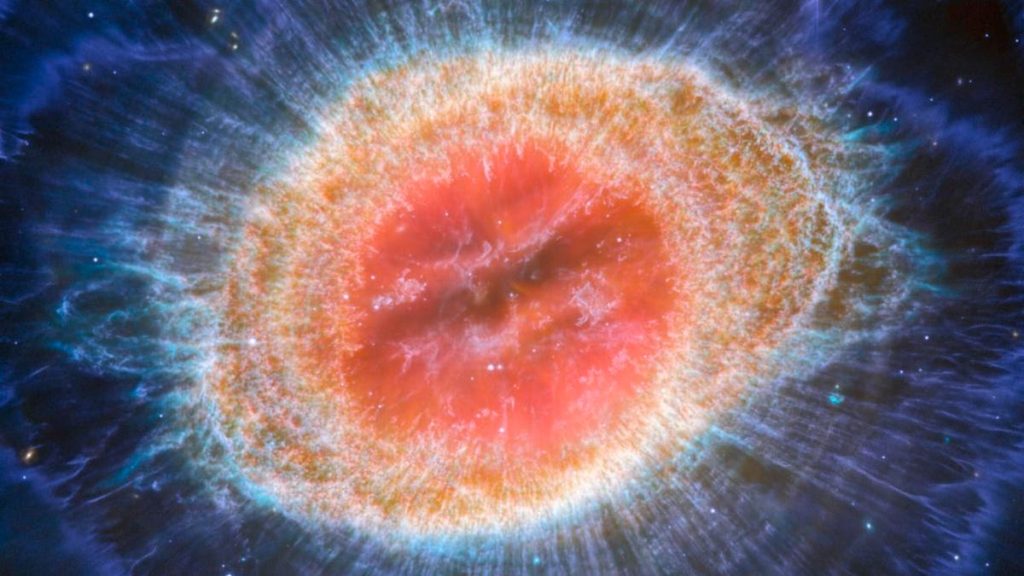It’s time you caught up with what the James Webb Space Telescope has been up to recently.
After celebrating its first year in space this summer the tennis court-sized infrared observatory has been imaging some of the most famous objects in the night sky.
Captured in near-and mid-infrared for the first time by the observatory’s Near-Infrared Camera (NIRCam) and Mid-Infrared Instrument (MIRI) instruments, new details are visible in a famous supernova remnant, a planetary nebulae and a giant galaxy.
Here are the three spectacular images—and what they show:
1. Supernova 1987a
All giant stars end their lives as a supernova, exploding and expelling layers of gas and dust to leave a beautiful remnant in the night sky. Scientists can see these remnants in our own galaxy, but the last one to be seen actually exploding was in February 1987. The closest since then was SN 1987A (Supernova 1987A), which exploded 168,000 light-years away in the Large Magellanic Cloud, a dwarf galaxy that orbits the Milky Way.
This new image, above, from Webb’s NIRCam shows a keyhole shape of material being ejected as well as faint crescents around it that have never before been observed. Around it are hotspots of material in a ring, which are thought to pre-date the actual explosion, with two further rings beyond.
2. The Ring Nebula
This image, above, from MIRI is of one of the most famous planetary nebulae in the night sky. Found close to bright star Vega—currently riding high in the summer sky in the northern hemisphere—this new image reveals for the first time a faint halo of material around the bright ring.
What’s within suggests that the dying star that’s producing the Ring Nebula (also called M57) has a companion star nearby whose presence may be responsible for the beautiful sculpting of the gas and dust being expelled. It’s also worth checking out JWST’s NIRCam image.
3. The Whirlpool Galaxy
Also taken by MIRI, this is the Whirlpool Galaxy, above, named for the swirling spiral arms that surround its bright core. Catalogued as M57, it’s close to the end of the Big Dipper’s tail a popular target for small backyard telescopes.
While this MIRI image shows a web-like structure with incredible depth, the NIRCam image shows ionized gas created by stars forming in clusters. M57 is 27 million light-years away from Earth in the constellation Canes Venatici. There’s also a composite image of the two images to drool over.
Wishing you clear skies and wide eyes.
Read the full article here









